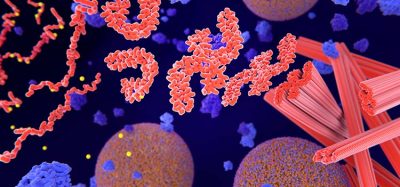Revealed structure of enzyme could progress cancer research
Posted: 5 April 2021 | Victoria Rees (Drug Target Review) | No comments yet
Researchers have elucidated the 3D structure of the Taspase 1 enzyme, known to be involved in a range of cancers.

To develop more effective drugs against a range of cancers, researchers have been investigating the molecular structure of many cancer-linked enzymes in the body. One enzyme is Taspase 1, a type of enzyme known as a protease. The study was conducted at Arizona State University, US.
According to the researchers, Taspase 1 appears to play a vital role in a range of physiological processes, including cell metabolism, proliferation, migration and termination. The normal functioning of Taspase 1 can go awry however, leading to a range of diseases, including leukaemia, colon and breast cancers, as well as glioblastoma.
As Taspase 1 dysregulation is increasingly implicated in the genesis and metastasis of various cancers, it has become an attractive candidate for drug development. However before this can happen, researchers will need a highly detailed blueprint of the structure of this protease.
In the new study, the team unveiled, for the first time, the catalytically active three-dimensional (3D) structure of Taspase 1, revealing a previously unexplored region that is essential for the functioning of the molecule. The structure was solved using X-ray crystallography and confirmed with electron microscopy.
The study results show that reducing this critical helical region of Taspase 1 limits protease activity, while eliminating the helical region deactivates Taspase 1 functioning altogether. Earlier research suggests that disabling Taspase 1 activity to block the progression of cancer could be achieved without harmful side-effects.
“We have reported the importance of a previously unobserved long fragment of the protein in the catalytic activity of Taspase1, which can be used as attractive target to inhibit Taspase1,” said Jose Martin-Garcia, lead scientist on the project and co-corresponding author. “The crystal structure of the active Taspase1 reported in our article will be greatly beneficial to advance the design of Taspase1 inhibitors for anticancer therapy.”
The study was published in Structure.
Related topics
Imaging, Microscopy, Molecular Targets, Structural Biology, X-ray Crystallography
Related conditions
Cancer
Related organisations
breast cancer, colon cancer, glioblastoma, leukaemia
Related people
Jose Martin-Garcia






